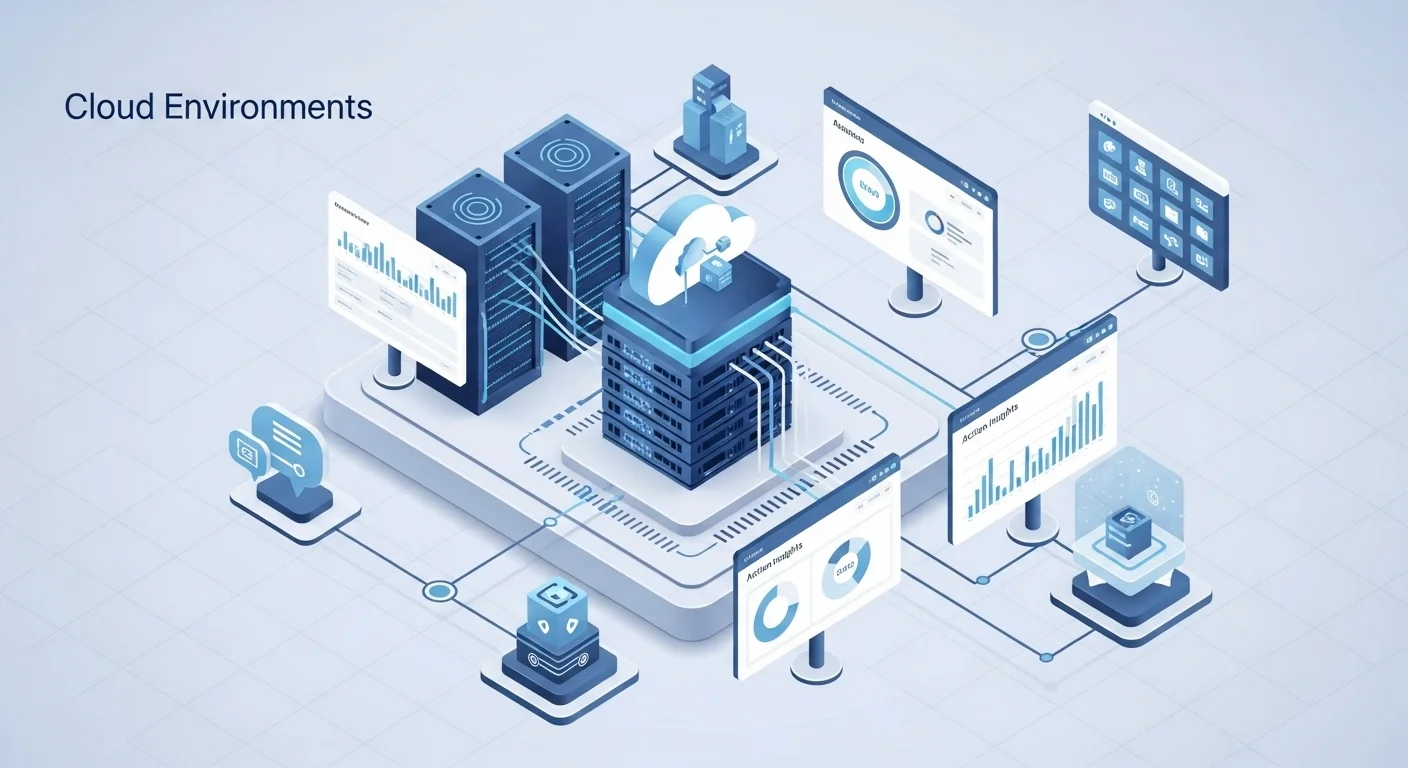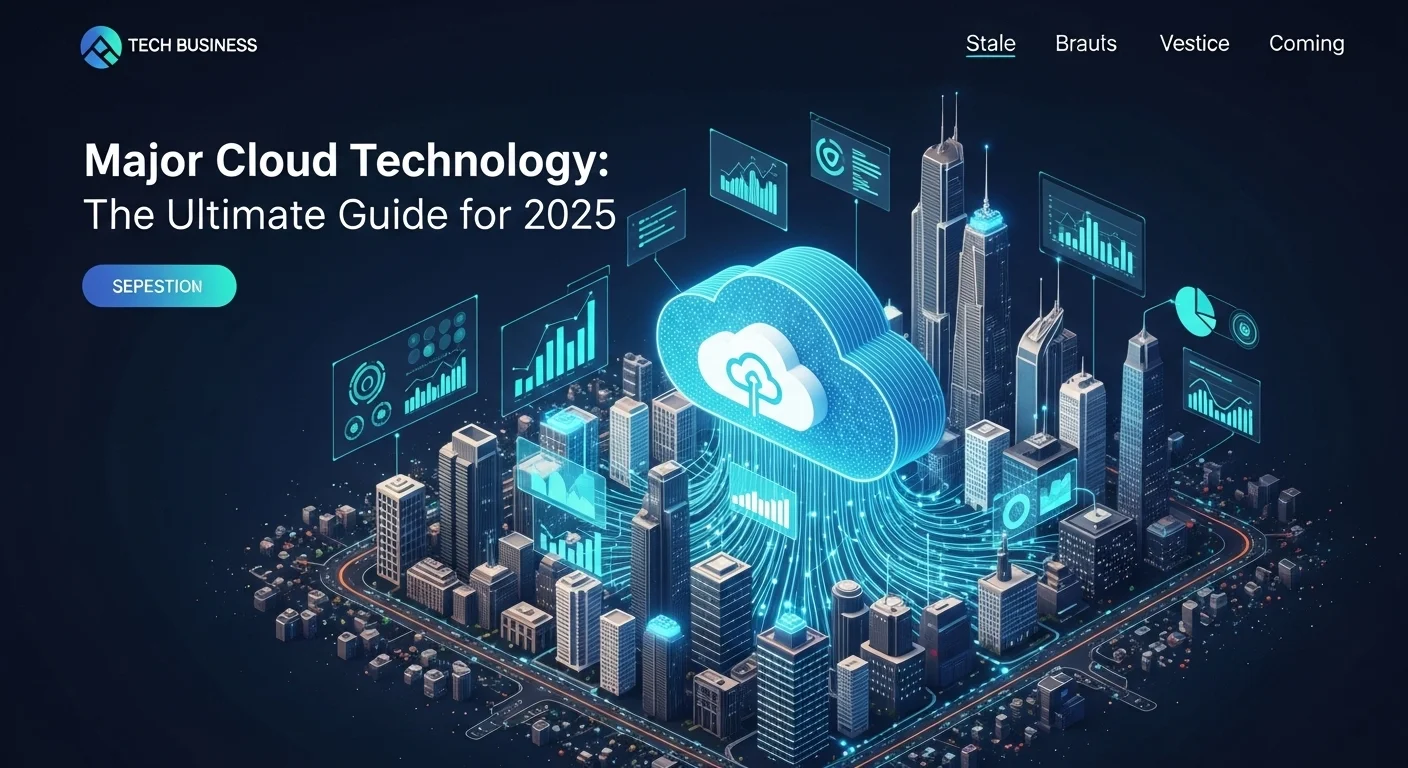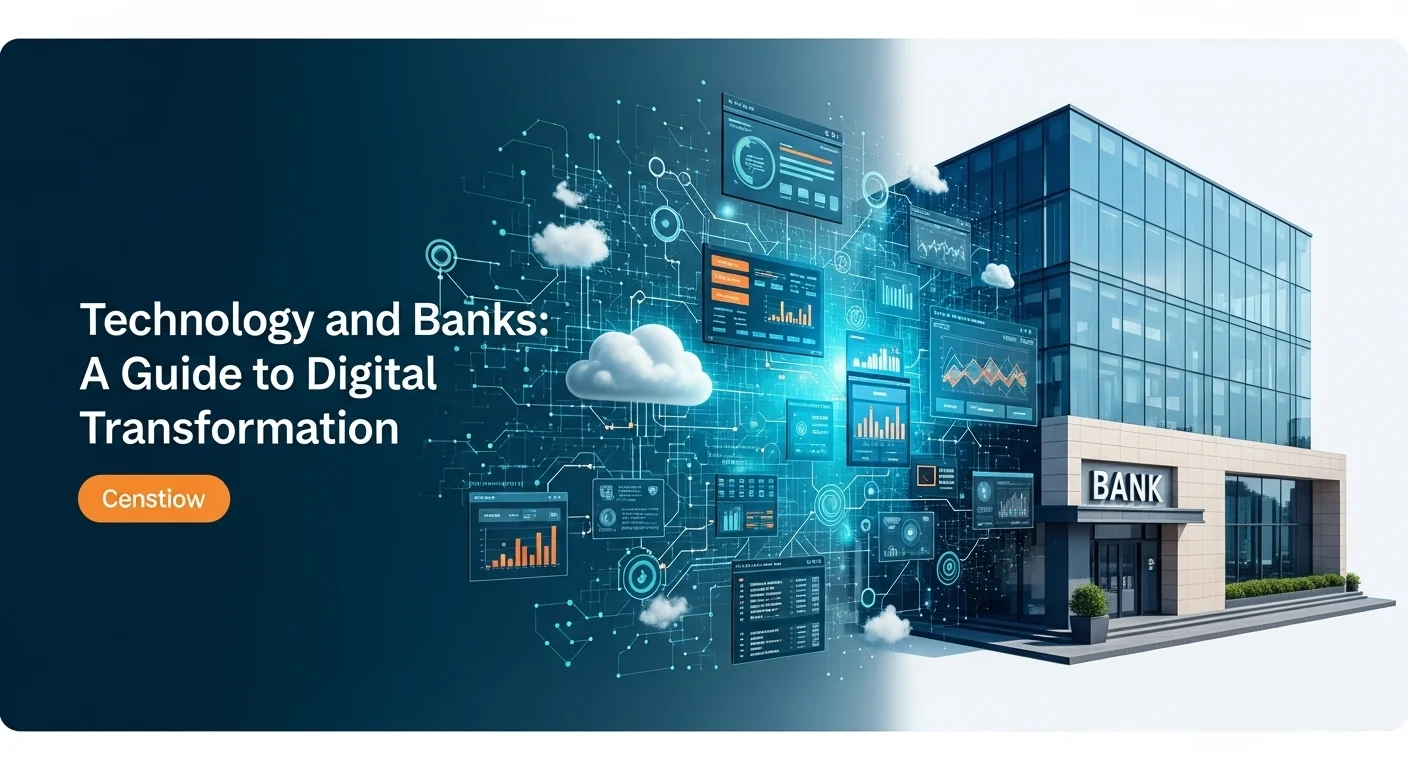The Cloud Environment Explained: A No-Nonsense Guide From an Expert

Executive Summary
For years, I've watched businesses either struggle with or master the 'cloud.' It's not just a buzzword; it's the engine of modern business. A cloud environment is essentially your company's digital workshop, but on the internet—scalable, flexible, and powerful. Moving from dusty server rooms to a dynamic cloud-based environment lets you innovate faster and smarter. In this guide, I'll walk you through everything you need to know, from the absolute basics to creating a rock-solid secure cloud. We'll look at the big players, including the powerhouse that is the Oracle Cloud Environment. Whether you're a curious tech enthusiast or a business leader, understanding this is key to staying ahead. Let's dive in.
Table of Contents
What is a Cloud Environment and Why is It a Game-Changer?
Table of Contents
In my two decades in tech, no shift has been as monumental as the move to the cloud. But what are we really talking about when we say 'cloud environment'? Think of it this way: instead of owning a massive, expensive power generator in your basement, you just plug into the electrical grid and pay for what you use. A cloud environment is that grid, but for computing power. It's a vast pool of virtual resources—servers, storage, databases, and more—all accessible over the internet. This is a radical departure from the old days of buying and maintaining your own physical servers in a chilly back room. The importance of this change is massive. Adopting a cloud-based environment has become the foundation of modern business strategy, allowing companies of any size to innovate and scale in ways we could only dream of before. The real magic is its on-demand nature; you get what you need, when you need it, and you only pay for what you use.
The Core Components of a Cloud Environment
To really get it, let's look under the hood. The whole system is built on 'virtualization,' a clever trick that lets one physical server act like many separate virtual ones. This is what makes the cloud so flexible. The main parts you'll work with are:
- Compute: This is the engine room—the processing power from virtual servers that run your apps and crunch your data.
- Storage: From super-fast storage for your active website to cheaper, slower storage for archives, the cloud has a place for every kind of data.
- Networking: This is the plumbing. It includes virtual routers, firewalls, and other tools that let you build secure and complex networks for your applications to talk to each other and the world.
- Databases: Instead of the headache of managing your own, you can use managed database services that handle all the tedious maintenance for you, whether it's a traditional SQL or a modern NoSQL database.
Types of Cloud Environments: Public, Private, and Hybrid
Not all clouds are created equal, and the right choice depends entirely on your needs for security, control, and cost. I've seen clients succeed with all three models:
- Public Cloud: This is the most common path. A provider like Amazon Web Services (AWS), Microsoft Azure, or Google Cloud owns and operates all the infrastructure. You just rent a slice of it. The benefits are incredible scalability and the pay-as-you-go model that startups love.
- Private Cloud Environment: Imagine having a section of that power grid all to yourself. A private cloud is a set of resources used exclusively by one organization. It can be in your own data center or hosted by a third party. I've seen this a lot with financial institutions and government agencies who need absolute control and top-tier security for sensitive data. It’s a bigger investment, but for some, the control is worth it.
- Hybrid Cloud: This is the best of both worlds. It combines a private cloud with one or more public clouds, letting them talk to each other. For example, you might keep your sensitive customer data in your private cloud but use the public cloud to handle massive traffic spikes on your website. It's all about flexibility.
The Criticality of a Secure Cloud Environment
Let me be blunt: moving to the cloud without a solid security plan is a recipe for disaster. A secure cloud environment doesn't happen by accident. It's a partnership, what we call the 'Shared Responsibility Model'. The provider secures the physical infrastructure (the 'cloud' itself), but you are responsible for securing what you put *in* the cloud. This means managing who has access, encrypting your data, and setting up firewalls. The pillars of a secure setup include:
- Identity and Access Management (IAM): Being strict about who can access what.
- Data Encryption: Scrambling your data so it's unreadable if it falls into the wrong hands, both when it's stored and when it's moving.
- Network Security: Building virtual walls to protect your resources and control who or what can get in and out.
- Compliance: Following industry rules like GDPR or HIPAA. This isn't optional.
Without a strong focus on security, all the cloud's benefits can evaporate in a single data breach. It's the most important conversation to have.
Exploring Specific Platforms: The Oracle Cloud Environment
While most people know AWS, Azure, and Google, other players have unique strengths. Take the Oracle Cloud Environment (OCI). I've worked with it on several enterprise projects, and it's built like a fortress. OCI focuses heavily on performance and security, especially for big-business applications. What sets it apart?
- Bare Metal Servers: These are dedicated physical servers. No sharing. This gives you incredible performance and control, perfect for massive databases or high-performance computing.
- Autonomous Database: This is Oracle's crown jewel. It's a database that manages, secures, and even repairs itself. It's a huge time-saver for database administrators.
- Enterprise DNA: Oracle has been working with large companies for decades, and it shows. They understand complex business needs and offer smooth migration paths for existing Oracle customers.
For any company deep in the Oracle ecosystem, the Oracle Cloud Environment is a natural and very powerful choice.
The Role of the Cloud Software Environment
Beyond just hardware, the cloud has changed how we build and use software. The cloud software environment is where modern applications live. It has fueled movements like DevOps, where development and operations teams work together, and serverless computing. This environment gives us:
- Speed: Developers can spin up new environments in minutes, not weeks. This means faster innovation and getting new features to market quicker.
- Automation (CI/CD): We can now set up automated pipelines that test and deploy code changes, which means more reliable software and happier developers.
- Elasticity: Apps can automatically grow or shrink based on demand. This ensures a great user experience and that you're not paying for idle servers.
The cloud software environment has truly leveled the playing field, giving small teams the power to build world-class applications. It's the engine driving the digital world we live in today.

Your Complete Guide to Mastering Cloud Solutions for Business
Getting your bearings in the cloud is one thing; mastering it is another. True success comes from a strategic approach to how you design, migrate, and manage everything. In this part of the guide, I'll share some hard-won lessons on building a cloud-based environment that truly serves your business. We'll cover how to design for resilience, choose the right services, and keep costs in check, all while maintaining a secure cloud environment. A good plan here is what separates companies that just 'use' the cloud from those that are transformed by it.
Architecting for the Cloud: Thinking Beyond 'Lift and Shift'
So many companies start their cloud journey with what we call a 'lift and shift'—basically copying and pasting their old servers into the cloud. I've seen it countless times. While it feels like a quick win, it's like buying a sports car and never taking it out of first gear. To unlock real power, you have to re-architect for the cloud. Key patterns I recommend are:
- Cloud-Native Design: This means building apps from scratch to live in the cloud, using things like containers (Docker, Kubernetes) and microservices. A microservices approach breaks a huge application into small, independent pieces that talk to each other. This makes everything easier to update, scale, and fix.
- Serverless Computing: This is a mind-bending concept that still excites me. You write your code, and the cloud provider handles everything else—no servers to manage. It's perfect for tasks that run in response to an event (like uploading a photo) and can be incredibly cheap.
- Designing for Failure: In the cloud, we assume things will break. It sounds pessimistic, but it leads to incredibly resilient systems. We build in redundancy across different physical locations, create automated failover systems, and design apps that can heal themselves.
A Closer Look at the Private Cloud Environment
While the public cloud gets all the headlines, a private cloud environment is still the right call for many. It's a single-tenant setup, so you're not sharing resources with anyone. This offers the ultimate level of control and security. You can do this in two ways:
- On-Premises Private Cloud: You own and run the whole show in your own data center. This requires a big upfront investment and a skilled team, but you have total control. I've seen this work well for companies with unique hardware needs.
- Hosted Private Cloud: Here, a provider gives you dedicated hardware in their data center. You get the security and isolation of a private cloud without having to manage the physical machines yourself. It's a great middle-ground.
The choice for a private cloud environment is often driven by strict rules (like in healthcare or finance), data location laws, or legacy apps that are too difficult to move to a public cloud.
A Techie's Comparison of Major Cloud Providers
Choosing your cloud provider is a huge decision. They all offer similar core services, but their personalities and strengths are very different. Here's my take from the trenches:
- Amazon Web Services (AWS): The original pioneer and market leader. AWS has a staggering number of services for every imaginable need. Its community is huge, and the documentation is vast. It's often the go-to for startups that want the biggest toolbox available.
- Microsoft Azure: If your company runs on Microsoft, Azure is a no-brainer. The integration with Windows Server, Office 365, and Active Directory is seamless. From my experience, their hybrid cloud solutions are top-notch, making it easier to connect your own data center to the cloud.
- Google Cloud Platform (GCP): Google is the king of data, networking, and machine learning. I always recommend GCP to clients whose business revolves around massive data analysis or cutting-edge AI. They also created Kubernetes, so their container services are world-class.
- Oracle Cloud Environment (OCI): As I mentioned, OCI is a beast for enterprise jobs. If you're running a massive Oracle database, OCI is engineered to make it fly. They compete aggressively on price and performance for high-demand workloads, offering a predictable and powerful platform.
Unlocking Potential with the Cloud Software Environment: DevOps and CI/CD
The real magic happens when you change how your teams work. This is where DevOps comes in. The cloud software environment is the perfect playground for it. A key part of this is the CI/CD pipeline, a concept that has revolutionized my projects:
- Continuous Integration (CI): Developers constantly merge their code changes into a central place. Every merge triggers an automated build and test. This catches bugs fast, often within minutes of being introduced.
- Continuous Deployment/Delivery (CD): This takes CI a step further. Every change that passes the tests is automatically prepared for release. With Continuous Deployment, it's even pushed live to customers automatically.
With a solid cloud software environment, you can go from an idea to a live feature in hours instead of months. That speed is an unbelievable competitive advantage.
Advanced Tactics for a Secure Cloud Environment
Beyond the basics, true security requires a defense-in-depth strategy. You need multiple layers of protection.
- Cloud Security Posture Management (CSPM): These are automated watchdogs that constantly scan your cloud for misconfigurations, like a storage bucket left open to the public. They find risks before they become breaches.
- Cloud Workload Protection Platforms (CWPP): These tools protect the actual applications running in the cloud—your virtual machines and containers. They scan for vulnerabilities and can detect and block intrusions.
- Security Information and Event Management (SIEM): A SIEM is like a central security nerve center. It gathers logs from everywhere, uses smart analytics to spot suspicious activity, and alerts your security team.
Ultimately, a secure cloud environment is about more than just tools; it’s about culture. Regular security training and a solid incident response plan are just as vital. By combining smart architecture with vigilant security practices, you can build a cloud that's not just powerful, but truly safe.

Practical Tips and Strategies to Master Your Cloud Environment
Running a successful cloud environment is a marathon, not a sprint. It’s about continuous improvement and smart management. In this final section, I'll share some practical, field-tested advice to help you get the most out of your cloud, whether you're running on a private cloud, the Oracle Cloud Environment, or a mix of everything. By focusing on cost, performance, and security, you can turn your cloud investment into a powerful engine for growth.
Financial Operations (FinOps): How to Avoid Cloud Bill Shock
I’ve seen it happen: a company gets excited about the cloud's flexibility, and then the first bill arrives. FinOps is a practice that brings financial discipline to the cloud's variable spending model. It's about making smart trade-offs between speed, cost, and quality. Here are my go-to strategies:
- Tag Everything for Visibility: You can't control what you can't see. The first thing I tell any team is to implement a strict tagging policy. Tag every resource with its project, owner, or department. This makes it crystal clear where the money is going.
- Rightsize Relentlessly and Hunt for Zombies: Most teams over-provision their servers 'just in case'. Use cloud tools like AWS Compute Optimizer to find and shrink these oversized instances. Also, hunt for 'zombie' resources—idle servers or unattached storage disks that are still costing you money every month.
- Use Reserved Instances and Savings Plans: If you have a workload that's going to run 24/7 for the next year, tell your cloud provider. By committing to one or three years of usage, you can get massive discounts (sometimes over 70%) compared to on-demand prices. This is the single biggest cost-saver for stable applications.
- Automate Shutdowns: Why pay for development and testing environments to run overnight or on weekends? A simple script can automatically shut them down during off-hours, easily cutting their cost in half.
Optimizing Performance for a Great User Experience
In today's world, slow is the new down. A laggy application can kill your business. Here’s how to keep things snappy in the cloud:
- Embrace Auto-Scaling: Set up your applications to automatically add or remove servers based on traffic. This ensures you can handle a sudden rush of users without paying for that extra capacity when things are quiet.
- Implement a Content Delivery Network (CDN): A CDN is a no-brainer for any public-facing website or app. It stores copies of your content (like images and videos) in data centers around the world. When a user in Japan visits your site, they get the content from a server in Asia, not one in Virginia. This drastically cuts down load times.
- Choose the Right Storage Tier: Don't use a Ferrari to haul gravel. Cloud providers have different storage types for different needs—super-fast SSDs for your main database, cheaper options for less critical data, and archival storage for backups. Matching your workload to the right tier saves money and improves performance.
- Tune Your Database: The database is often the performance bottleneck. Use managed database services that provide performance dashboards, make sure your data is properly indexed, and use caching tools like Redis to take some of the load off your primary database.
Advanced Strategies for a Bulletproof Secure Cloud Environment
Security is a continuous process of hardening your defenses as threats evolve. Here are some advanced strategies I recommend:
- Adopt a Zero Trust Mindset: The old idea of a secure network perimeter is dead. The Zero Trust model assumes that threats can come from anywhere, even inside your network. It enforces strict verification for every single person and device trying to access any resource. The motto is 'never trust, always verify'.
- Integrate Security into DevOps (DevSecOps): Make security a team sport, not just the security team's problem. By building security checks directly into your automated development pipeline, you can catch vulnerabilities in your code before it ever goes live.
- Use AI and Machine Learning for Threat Detection: Modern security tools use AI to sift through mountains of data and spot weird patterns that could signal a sophisticated attack. These systems can often detect threats that a human analyst might miss.
- Hire Ethical Hackers: The best way to find your weak spots is to have someone try to break in. Regularly conduct penetration tests where you hire security professionals to attack your cloud environment and show you where your vulnerabilities are.
Ultimately, a secure cloud environment is about more than just tools; it’s about culture. Regular security training and a solid incident response plan are just as vital. By combining smart architecture with vigilant security practices, you can build a cloud that's not just powerful, but truly safe.
Best Practices for Specialized Environments
While most tips are universal, some environments have unique needs. If you're using the Oracle Cloud Environment, take full advantage of the Autonomous Database's self-patching and security features. If you manage a private cloud environment, focus on automation. Your goal should be to provide a self-service, 'cloud-like' experience for your internal users. For more authoritative definitions on cloud concepts, the Gartner Cloud Computing Glossary is an excellent external resource. By embracing these strategies, you can transform your cloud from a simple utility into a true strategic advantage for your business.
Expert Reviews & Testimonials
Sarah Johnson, Business Owner ⭐⭐⭐
The information on cloud environments is solid, but as a business owner, I'd have loved a few more real-world case studies to connect the dots.
Mike Chen, IT Consultant ⭐⭐⭐⭐
Really helpful article about the cloud environment. It clarified a lot for me, though a couple of the more technical bits could have been broken down even more simply.
Emma Davis, Tech Expert ⭐⭐⭐⭐⭐
Excellent article! This is a fantastic and comprehensive guide to the cloud environment. It really helped with my specialization, and I found it perfectly clear.



